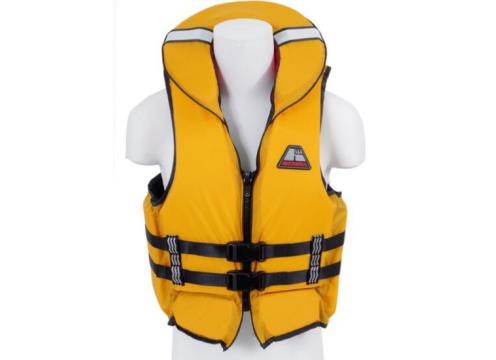Fouling, or more accurately ‘biofouling’, is the build-up of plant and animal life that occurs on all submerged structures, from rocks to oil-rigs – and of course, boat hulls.
These are generally split up into two subdivisions; microfouling and macrofouling.
Microfouling is made up of microscopic bio-organisms, such as slime, bacteria and other small algal life forms.
Macrofouling is the bigger stuff that us boaters tend to get worked up about, such as barnacles, mussels, oysters, fanworm and seaweed.
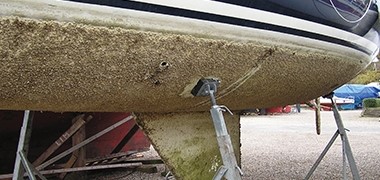
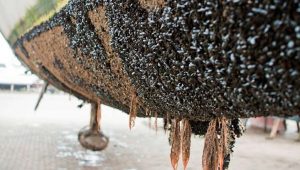
Why should I worry about it?
Because any significant growth of fouling has an immediate effect on your boat’s performance and its fuel efficiency.
On planing powerboats even a light build-up of fouling can knock a few knots off your top speed and increase fuel consumption by 30%. Heavier growth may prevent a boat from planing altogether.
Does fouling vary from place to place?
Absolutely – from place to place and even year to year, according to the water temperature, its salinity, the level of sunlight, the quality of nutrients and countless other factors.
Generally speaking, the higher the water temperature, the greater the growth, hence the reason fouling is so bad in areas like the Mediterranean. There are big variations in Northland harbours, with local boaters invariably claiming that their haunt is the worst.
Has it always been a problem?
Yes! and it was arguably even more of a problem to the lumbering sailing ships of yesteryear. Heavy fouling or the lack of it could be a matter of life or death during the slow-motion naval battles that they engaged in
How did they cope?
In the early days careening was the preferred method This involved tipping the ship on its side, lighting small fires under the hull, then scraping off the softened pitch and fouling by hand.
Pitch, tar and even whale grease were favoured by the likes of Christopher Columbus and Sir Walter Raleigh. The introduction of metal sheathing, first with lead and then copper and zinc, didn’t happen until the 1700’s.
What other types of antifouling were tried?
You name it, someone has tried it. Patent records have been filed for everything from ground to arsenic, red lead, sulphur and even guano!
History doesn’t relate which ones were the most effective, suffice it to say that bird poo doesn’t feature on many chandlers’ stocklists these days!.
WHAT ARE OUR OPTIONS TODAY?
The two main categories of biocidal antifouling are hard and ablative:
1. Hard
Hard Antifouling delivers biocides through ‘contact leaching’ – it is contact with water which causes the biocides to leach out and protect the hull. As a result the protection is not constant, it starts out high and then wanes as the biocides deplete, leaving behind a buildup of hard film. They also lose their antifouling ability if kept out of the water, so they cannot be hauled and relaunched without repainting. They are not affected by erosion and so are commonly used on speed boats and racing vessels.
International Ultra 2 is ideal for the racing yachtsman that regularly cleans the bottom of his boat.

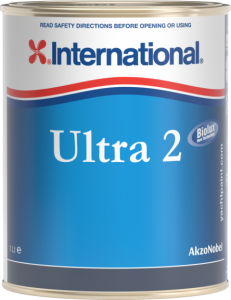
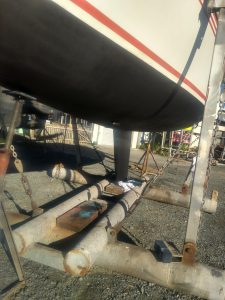
2. Ablative Antifouling
Also known as self polishing antifouling, the delivery mechanism for this antifouling type is erosion. The paint either wears away due to the friction of moving through the water and so releases biocides, or there is a chemical reaction at the surface of the coating which releases biocides.The release is controlled and so they provide linger and more consistent protection than hard film antifouling. As it is only active in water, the boat can be hauled and relaunched without loss of protection. Altex No: 5 is a popular choice for Northland Boaties.

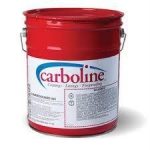
What type of antifouling should I use on aluminium?
Antifouling paint used for aluminium should not contain cuprous oxide biocide as the high copper content can lead to corrosion problems unless the hull is expertly painted and protected using sophisticated impressed current protection systems.
Antifouling formulated using cuprous thiocyanate are better used as this material is more compatible with aluminium. However, it is crucial to apply the correct primers at the correct film build thickness to provide a barrier between the antifouling and the aluminium surface. Altex Petit Vivid and International Trilux 33 are good options.
An advantage of products formulated using cuprous thiocyanate, is the ability to produce bright clean colours including clean whites.
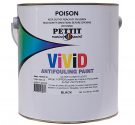

ALL MARINE Staff are always on hand to answer any of your questions, so feel free to pop in for a chat and some friendly advice.


